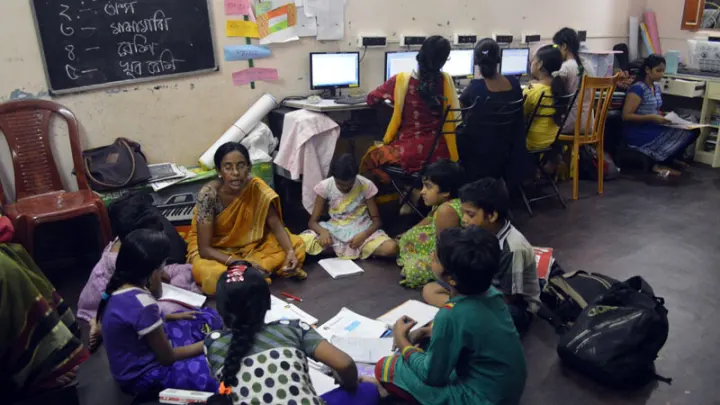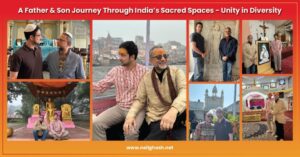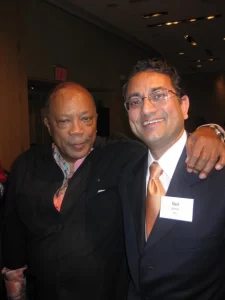Investing in human resources is critical to any organization seeking to make a real difference in people’s lives — and not for the reasons you may think. A strategic plan requires a qualified team to execute it. But more importantly, developing human resources is at the heart of how we build trust and promote lasting social change.
I saw the critical importance of such investments firsthand, when I visited South Kolkata Hamari Muskan, a grassroots organization working with children living in the red light district of Kolkata, India. SKHM helps those children break the familial cycle of exploitation through education, therapy and other capacity-building services.
Perhaps more importantly, they build local capacity by hiring staff from within the red-light districts. “Two of our key workers were prostituted women,” said Program Manager Rohini Banerjee. “One was an orphan who grew up on these streets, and three of our teachers come from households where prostitution was a part of the reality in which they grew up. Our workers know the area and its people with a degree of familiarity,” he said, “that helps us access households other organizations could not.”
I also spent time with the children living in the red light district and saw how important it is that these programs are homegrown, and rooted in the communities they serve. It became clear to me that trust cannot be manufactured or improvised. That is why it is imperative that any sustainable development model include grassroots organizations and long-term capacity-building strategies.
As a child, I saw the power of capacity-building when I watched my dad mentor troubled kids, and even bring them with us on our family vacations, to support their reintegration and healing. I also learned from my childhood experience in Kolkata how building the local capacity of grassroots organizations and their staff helps to develop stronger, more inclusive communities. When it comes to reaching out to the world’s most vulnerable children, organizations deeply grounded in the community are uniquely positioned to equip youth, and especially girls, with the skills, knowledge and resources they need to thrive.
Investing in local human resources, as these examples so vividly illustrate, is a win-win situation: The organization earns credibility and insight while also strengthening the community it serves. SKHM has taken this process a step further by forming an informal board whose members are drawn from the community. By 2025, the administrative staff plans to transfer management entirely to the community board — freeing former staff members to begin to replicate their efforts in Kolkata’s other red-light districts.
While skills in areas such as monitoring and evaluation, management, fundraising and informational technology are essential to any organization’s success, resources for acquiring these skills are limited in the developing world. Many funders ignore the need for capacity-building, compounding the problem. To be frank, if all we do as philanthropists, government agencies, private sector and development actors is simply to support programs financially, we are setting up those efforts to stall — or fail — after we are gone.
By contrast, building local knowledge and skills can facilitate sustainable progress. Here are a few of the lessons I have learned as a result of my work with local organizations in Africa, Asia, Latin America, the Middle East and North Africa, and here in the United States:
1. Timing is (almost) everything.
Just as a child learns to walk before she runs, community-based organizations need a foundation on which to build increasingly complex skills among their staff and local leaders. We must develop long-term partnerships and provide strategic coaching and capacity-building over time.
2. Prioritize finding local or regional experts to help build skills.
When working on capacity-building, it can be tempting to rely solely on external experts to bring resources to the table. However, the closer we can stay to the context of the people we are trying to help, the more effective we will be.
I’ve found that regional consultants work best when providing organizational development support. Being grounded in a shared culture, language and context makes a real difference. In addition, grassroots organizations benefit from being engaged with peer networks, which offer them a chance to share their knowledge, experiences, resources and ideas with one another.
3. Investing in people creates new resources in underserved areas.
When we support the development of local staff, we add resources in communities that are often beyond the reach of mainstream social services.
For example, providing professional training in early childhood development to local teachers and caregivers can greatly boost the quality of those services. Grassroots organizations are sometimes the only resource for vulnerable children — including those who are HIV-positive or struggle with disabilities — to access education, counseling, immunizations and vital nutrition support. Equipped with professional training and networks, staff can provide high-quality services to children who would otherwise go without.
4. Supporting local leaders gives voice to the oppressed.
Grassroots organizations are often led by visionaries who grew up in the community they serve. They have already overcome incredible barriers. Helping these leaders access professional training, improve their management skills and strengthen their staff affirms and supports the tremendous work they have already accomplished in their communities.
5. Scaling and replicating programs requires skilled staff.
In order to transform locally based programs into replicable models, we must develop robust yet adaptable systems and structures. When staff build their skills in areas that increase replicability — such as operations management, curriculum development and monitoring and evaluation frameworks — their potential impact is exponentially greater.
Support for capacity-building remains difficult to attain. But I am encouraged that growing numbers of corporations, foundations and individual donors recognize its importance and are increasingly willing to fund it.
I asked Rohit Burman, the vice president for global corporate citizenship & sustainability at The Estee Lauder Companies, Inc., about their approach in reaching at risk children and youth. He told me: “Our ultimate goal is to have the greatest positive impact on the lives of vulnerable children and youth, and that means finding and supporting innovative grassroots organizations that give them what they need to thrive, and capacity-building is an essential part of that process.”




